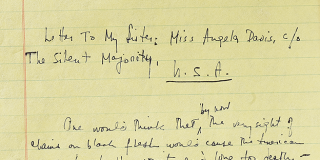
Hartmann Schedel (1440–1514)
Woodcuts by workshop of Michael Wolgemut (1434–1519)
Liber chronicarum (“Nuremberg Chronicle”), Folio 92 verso
Nuremberg, Germany: Anton Koberger, 1493
The Miriam and Ira D. Wallach Division of Art, Prints and Photographs, Print Collection
Liber chronicarum (“Nuremberg Chronicle”), Folio 92 verso
The Great Library of Alexandria in Egypt was one of the largest and most important research institutions in the ancient world, established to realize the Ptolemaic rulers’ goal of collecting all knowledge. It became known for its academic freedom and attracted scholars from afar. The library’s scribes copied every text that entered the city—be it literary, scientific, or medical—to add to the library’s collection.
This illustration of the library’s partial destruction in 48 BCE during a Roman siege is from the Nuremberg Chronicle, an ambitiously comprehensive record of world history. The depiction focuses on the burning books, rather than showing the building ablaze, symbolizing not just the loss of physical texts but also of ideas. Instead of rendering papyrus scrolls, the artist represented the texts as codices, which would have been more familiar to the Chronicle’s early modern European audience.
: The Miriam and Ira D. Wallach Division of Art, Prints and Photographs, Print Co…
Currently on View at Stephen A. Schwarzman Building
The New York Public Library believes that this item is in the public domain under the laws of the United States, but did not make a determination as to its copyright status under the copyright laws of other countries. This item may not be in the public domain under the laws of other countries. Though not required, if you want to credit us as the source, please use the following statement, "From The New York Public Library," and provide a link back to the item on our Digital Collections site. Doing so helps us track how our collection is used and helps justify freely releasing even more content in the future.






